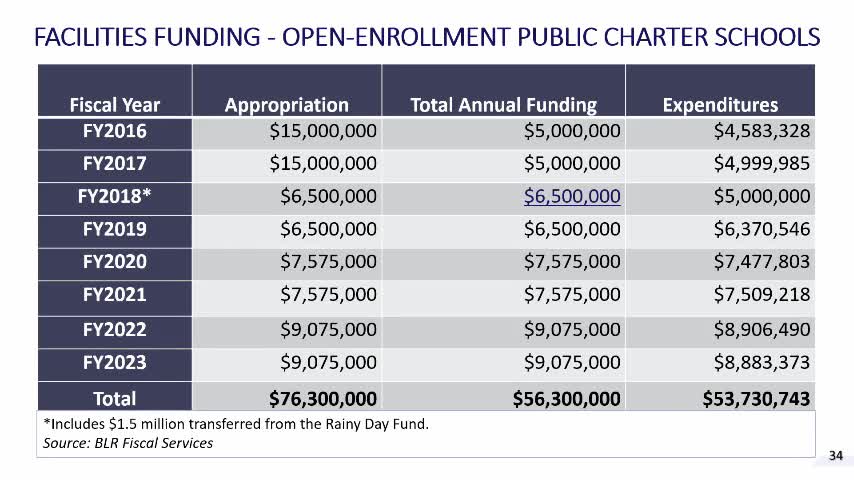Arkansas allocates $53.7M for public charter school facilities since 2016
February 05, 2024 | EDUCATION COMMITTEE - SENATE, Senate, Committees, Legislative, Arkansas

This article was created by AI summarizing key points discussed. AI makes mistakes, so for full details and context, please refer to the video of the full meeting. Please report any errors so we can fix them. Report an error »

In a recent meeting of the Arkansas Senate Education Committee, discussions centered on the funding mechanisms for open enrollment public charter schools, highlighting both the financial support provided and the eligibility criteria established by the General Assembly. Since the program's inception in fiscal year 2016, approximately $53.7 million has been allocated to these charter schools, with $4.6 million distributed in the initial year alone.
The funding, which is distributed on a per Average Daily Membership (ADM) basis, has seen a notable increase in participation. In FY 2023, 18 out of 21 operating charter systems received funding, marking an 86% acceptance rate. The funding is intended for various uses, including property services, with a significant portion allocated to the rental of land and buildings. In the last three fiscal years, charter schools have spent millions on property services, indicating a growing reliance on external facilities.
The committee also examined how Arkansas's funding model compares to those of other states. According to a report from the Education Commission of the States, Arkansas employs a dual funding approach, providing both appropriations and debt assistance for facility projects. This positions the state alongside others that offer similar support, while some neighboring states, like Louisiana and Tennessee, do not provide any form of assistance.
Furthermore, the committee reviewed capital expenditures per student in Arkansas, revealing that the state consistently falls below the national average in funding for school facilities. This trend raises concerns about the adequacy of financial resources available for educational infrastructure, which could impact the quality of education provided to students.
As the committee continues to assess the effectiveness of funding for charter schools, the implications of these discussions are significant. They not only reflect the state's commitment to supporting educational alternatives but also highlight the ongoing challenges in ensuring equitable funding across all educational institutions. The committee's findings may lead to further evaluations of funding strategies and potential reforms aimed at enhancing educational facilities statewide.
The funding, which is distributed on a per Average Daily Membership (ADM) basis, has seen a notable increase in participation. In FY 2023, 18 out of 21 operating charter systems received funding, marking an 86% acceptance rate. The funding is intended for various uses, including property services, with a significant portion allocated to the rental of land and buildings. In the last three fiscal years, charter schools have spent millions on property services, indicating a growing reliance on external facilities.
The committee also examined how Arkansas's funding model compares to those of other states. According to a report from the Education Commission of the States, Arkansas employs a dual funding approach, providing both appropriations and debt assistance for facility projects. This positions the state alongside others that offer similar support, while some neighboring states, like Louisiana and Tennessee, do not provide any form of assistance.
Furthermore, the committee reviewed capital expenditures per student in Arkansas, revealing that the state consistently falls below the national average in funding for school facilities. This trend raises concerns about the adequacy of financial resources available for educational infrastructure, which could impact the quality of education provided to students.
As the committee continues to assess the effectiveness of funding for charter schools, the implications of these discussions are significant. They not only reflect the state's commitment to supporting educational alternatives but also highlight the ongoing challenges in ensuring equitable funding across all educational institutions. The committee's findings may lead to further evaluations of funding strategies and potential reforms aimed at enhancing educational facilities statewide.
View full meeting
This article is based on a recent meeting—watch the full video and explore the complete transcript for deeper insights into the discussion.
View full meeting
